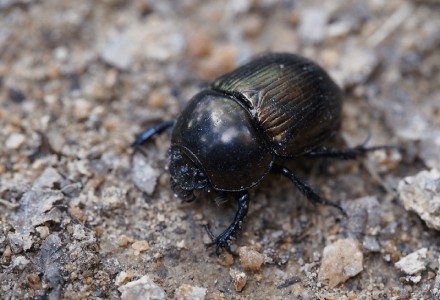
Scarab Beetle Facts
- Most notably, the surprisingly fascinating Scarab Beetle constitutes one of the largest of all known insect families. That facts holds true because, worldwide, more than 30,000 identified species exist. Further, experts theorize thousands more may remain undiscovered.
- This rather fascinating invertebrate also represents a typical example of a specific type of beetle. That specific type is known to entomologists as a coprophagous beetle. These species form the group of beetle varieties known for their habit of collecting dung into balls.
- Furthermore, its habit of rolling the ball of dung along the landscape played a role in history. That’s because it inspired the ancient Egyptians in their religious beliefs. This ancient culture actually correlated this behavior with that of their Sun god Khepri moving across the sky. Accordingly, they also considered the insect to be sacred.
Related Articles
Goliath Beetle American Burying Beetle Tansy Beetle
Scarab Beetle Physical Description
First of all, given the sheer number of types of Scarab Beetle, many physical variations exist. However, certain basic traits remain consistent throughout the large group. Most noticeably, all types possess a compact body that displays a roughly oval and robust shape.
Also, this family of invertebrates can most easily be distinguished by one specific physical feature. That’s the presence of unusually formed antennae, compared to other varieties of beetle. Further, these end in three flattened plates that fit together, forming a small club.
Most varieties also typically attain a length of roughly 1.5 in (3.8 cm) and show no noticeable degree of sexual dimorphism. The majority of the different types also present remarkably similar color patterns. These mainly consist of various shades of brown and black in color.
- Kingdom: Animalia
- Phylum: Arthropoda
- Class: Insecta
- Order: Coleoptera
- Family: Scarabaeidae
Photographer: Cyrus105
CC License: https://bit.ly/1p2b8Ke
Scarab Beetle Distribution, Habitat, and Ecology
Perhaps most importantly of all remains the range of various members of the Scarab Beetle family. That’s because the Family possesses a worldwide distribution. Also, in fact, various species inhabit virtually every temperate and tropical region of the world.
Again understandably, the habitat requirements vary significantly. However, although its habitat varies, depending on the species, the majority inhabit arid regions, such as deserts. Only a relatively small percentage evolved as native to other types of climate.
The female Scarab Beetle digs a deep, pear-shaped chamber in which to place a ball of dung. After mating, she lays a single egg in each chamber, prior to sealing it. Upon hatching, the larva ravenously feed on the ball of dung left behind.
The female of each species also repeats this process as often as possible, to ensure the survival of the species. However, a single female rarely produces more than 6 offspring that survive. This occurs due to a variety of reasons, including climate and predation.
Species Sharing Its Range
African Penguin Cheetah Kangaroo Paw
Check out our other articles on Astounding Lizards of the World, Pinecone Fish, Ometepe Island, Regal Birdflower, Lord Howe Island Stick Insect, Marine Iguana, Snowy Owl

